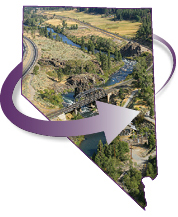Describe the state of roadway safety before the new practice was implemented. What was the safety issue, problem, or gap?
Between the State department of transportation, Federal Highway Administration (FHWA), Federal Railroad Administration (FRA), and railroad partners, it was challenging to get all stakeholders on the same page in pursuit and implementation of rail-highway safety projects. The Nevada Department of Transportation (NDOT) and Louisiana Department of Transportation and Development (LaDOTD) realized that a gap in information sharing among stakeholders could be stymied through consistent collaboration.

Describe the noteworthy practice.
NDOT railroad safety staff proactively began to meet quarterly with the Union Pacific Railroad (UPRR) regional manager to help ensure successful delivery of the State’s Railway-Highway Crossings (Section 130) Program. The regular quarterly meetings keep stakeholders engaged in pursuing a safer railroad crossing environment, and have proven so successful and efficient that NDOT and UPRR continue them to this day.
LaDOTD has held railroad safety committee meetings for more than 10 years. These meetings are used to review, update, and approve the State’s 3-year plan for rail-highway safety projects, and to explain projects and answer questions from committee members.
What technical and/or institutional changes resulted from the new practice?
NDOT and its rail partners are making great strides because of the regular collaborative meetings: development of a new master agreement, engineering design support for all public railroad crossings, and a railroad State action plan.
The meetings provide a platform for LaDOTD to highlight rail crossing safety across all stakeholders, present the railroad safety program, educate on rail-highway safety issues, answer questions about specific crossings or corridors, and collect ideas from rail partners to improve safety.
What benefits were realized as a result of the practice?
Effective communication among FHWA, FRA, railroad partners, and a State department of transportation can be a win-win solution to improve processes and increase safety at highway-rail crossings.
